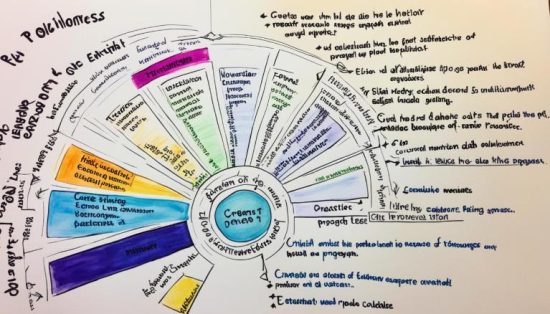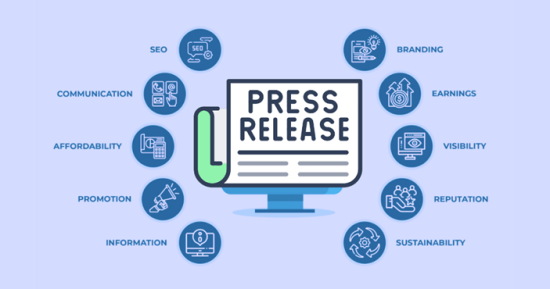
Welcome to our comprehensive exploration of how to start a narrative essay. This blog post is crafted to equip writers of all levels with essential tips, techniques, and strategies for captivating readers right from the start. We’ll delve into creating impactful introductions, selecting compelling topics, developing memorable characters and plots, employing descriptive language and effective dialogue, and revising for clarity and impact. Additionally, we’ll provide practical advice on publishing your narrative essay to ensure your story resonates with your audience. Let’s embark on the journey of crafting a narrative essay that makes a lasting impression.
Narrative Essay Definition

A narrative essay is a type of writing that tells a story or recounts a personal experience. It allows the writer to share their perspective, emotions, and insights with the reader in a captivating and engaging manner. Unlike other types of essays, the narrative essay focuses on creating a vivid and memorable narrative that draws the reader in and leaves a lasting impression.
The Essence of a Narrative Essay
At its core, a narrative essay is about storytelling. It allows the writer to take the reader on a journey, whether it’s through a fictional tale or a personal account. The essence of a narrative essay lies in its ability to transport the reader into a different world or provide them with a deeper understanding of the writer’s experiences. It is a form of expression that allows the writer to convey their thoughts, feelings, and insights through the power of storytelling.
Key Elements of Narrative Writing
To create a compelling narrative essay, several key elements must be incorporated:
- Plot: The plot provides the structure and sequence of events in the narrative. It includes the introduction, rising action, climax, falling action, and resolution. A well-developed plot keeps the reader engaged and interested throughout the essay.
- Characters: Characters bring the narrative to life. They can be based on real people or fictional creations. Strong characterization helps the reader connect with the story and creates emotional investment.
- Setting: The setting encompasses the time, place, and environment in which the story takes place. It helps to establish the mood and atmosphere of the narrative, making it more vivid and immersive.
- Conflict: Every narrative needs conflict to drive the story forward. Conflict can take many forms, such as internal struggles, external obstacles, or clashes between characters. It adds tension and creates opportunities for growth and development.
- Resolution: The resolution brings closure to the narrative and provides a sense of resolution for the reader. It ties up loose ends, answers questions, and allows the reader to reflect on the events and themes of the essay.
Selecting a Compelling Topic
Choosing the right topic is crucial when it comes to crafting a compelling narrative essay. The topic sets the foundation for your storytelling, engaging your readers from the beginning and guiding them through a captivating journey. To ensure that your narrative essay is impactful and resonates with your audience, follow these tips for selecting a topic that will leave a lasting impression.
1. Brainstorm: Begin by brainstorming ideas that are meaningful to you and have the potential to resonate with others. Consider personal experiences, significant events, or moments of personal growth. These can serve as the basis for powerful narratives that evoke emotions and connect with your readers.
2. Identify a Central Theme: Once you have a list of potential topics, narrow it down by identifying a central theme that ties your story together. This theme will provide a focus for your narrative and ensure that it has a clear and cohesive structure.
3. Consider Character Development: Compelling narrative essays often involve well-developed characters that readers can connect with. When selecting a topic, think about how it will allow for character development and exploration. This will add depth to your story and engage your audience on an emotional level.
4. Seek Conflict and Resolution: Conflict is an essential element of storytelling. Look for topics that allow for conflict and resolution, creating tension and driving the narrative forward. This will keep your readers engaged and invested in your story until the very end.
5. Relate to Your Target Audience: Consider your target audience and choose a topic that will resonate with them. Think about their experiences, interests, and values, and select a topic that will speak to their emotions and capture their attention.
Crafting a Strong Introduction
Section 4 of our beginner’s guide to starting a narrative essay focuses on crafting a strong introduction. The introduction plays a vital role in captivating readers’ attention and setting the tone for the entire essay. To achieve this, it is essential to begin with an engaging hook, setting the scene to immerse readers in the narrative, and presenting a clear thesis statement that outlines the main point of the essay.
Crafting a strong introduction for your narrative essay involves using an engaging hook, such as a compelling question or anecdote, to captivate readers immediately. Setting the scene with vivid descriptions enhances immersion by creating a clear picture of the time, place, and atmosphere. Finally, a clear and concise thesis statement articulates the main point or lesson of your story, guiding readers through the narrative’s purpose and direction. These elements combine to create a compelling start that draws readers into your narrative essay effectively.
Creating Memorable Characters
Creating memorable characters in a narrative essay involves giving them unique physical attributes and personality traits that make them vivid and relatable to readers. Understanding their motivations and desires adds depth, making them more dynamic and realistic. Exploring their relationships with others, whether friendships, family dynamics, or romantic entanglements, enriches the narrative by adding complexity and emotional resonance. By focusing on these elements, you can craft characters that enhance the overall impact and engagement of your narrative essay.

Plot Development Strategies
In narrative essays, the plot development plays a crucial role in engaging your readers and keeping them invested in your story. To create a compelling narrative, it’s important to employ effective plot development strategies that captivate your audience from beginning to end.
Mapping Out the Story Arc
When mapping out your story arc, consider how each section contributes to the overall development of your plot. Your introduction should set the stage and introduce the main characters and conflict. The rising action builds tension and develops the conflict, leading to the climax – the pivotal moment of your story. The falling action allows for the resolution to unfold and ties up loose ends, ultimately leading to a satisfying conclusion.
Incorporating Conflict and Resolution
Introduce conflicts that are central to your story and explore how they unfold and impact the characters.As you develop the conflict, ensure that there is a resolution that offers closure to your readers. The resolution should address and resolve the conflicts introduced earlier in the story, providing a sense of satisfaction and fulfillment. This resolution could be positive or negative, depending on the nature of your narrative, but it should bring a sense of completion to the overall plot.
Painting Vivid Scenes Through Descriptive Language
In a narrative essay, the power of descriptive language cannot be overstated. It is through vivid descriptions that you can transport your readers to different places and immerse them in the world you are creating. By carefully choosing words and crafting sensory details, you can paint scenes that come alive in the minds of your audience.
One technique for painting scenes in a narrative essay is to engage the reader’s senses. Use words that appeal to sight, sound, smell, taste, and touch to create a multi-dimensional experience. For example:
- Descriptive language in narrative essay: “The delicate aroma of freshly brewed coffee filled the air, enticing the senses.”
- Painting scenes in narrative essay: “The crimson rays of the setting sun cast a warm glow over the tranquil lake, creating a breathtaking landscape.”
By incorporating sensory details into your writing, you can transport your readers to the scene you are describing, allowing them to experience it as if they were there themselves.
In addition to engaging the senses, using vivid imagery is another effective way to paint scenes in your narrative essay. By choosing rich and evocative language, you can create mental pictures that are both captivating and memorable. Consider the following examples:
- Descriptive language in narrative essay: “The dilapidated house stood as a haunting reminder of a bygone era.”
- Painting scenes in narrative essay: “The vibrant colors of the blooming flowers danced in the gentle breeze, creating a tapestry of life and beauty.”
By using descriptive language and vivid imagery, you can transport your readers to the heart of your narrative, allowing them to visualize the scenes and feel a deeper connection to your storytelling.
Establishing the Narrative Voice and Point of View

In a narrative essay, the narrative voice and point of view play a crucial role in shaping the story and engaging the reader. These elements determine how the story is told and can greatly impact the overall narrative experience.
Choosing Between First-Person and Third-Person Perspectives
When crafting a narrative essay, choosing between a first-person and third-person perspective is crucial. First-person (“I” and “we”) offers intimacy by portraying events through the protagonist’s eyes, enhancing emotional connection. Third-person (“he,” “she,” “they”) provides objectivity and a broader view of characters and events, suitable for comprehensive storytelling. The choice should align with the narrative’s theme, desired engagement level, and intended tone to effectively convey the story’s essence
The Role of the Narrator in Storytelling
The narrator in a narrative essay serves as the storyteller, guiding the reader through the events and experiences of the story. The narrator’s role goes beyond simply recounting the sequence of events; they shape the narrative’s tone, perspective, and interpretation.
Dialogue Techniques for Authentic Conversations
Writing authentic and engaging dialogue is a crucial skill in crafting a compelling narrative essay. Capturing the essence of real-life conversations can bring your story to life and create a deeper connection with your readers. Here are some dialogue techniques to help you master the art of authentic conversations in storytelling:
- Listen and Observe: To create realistic dialogue, pay attention to how people speak in everyday conversations. Observe their tone, choice of words, and mannerisms. This will help you replicate natural speech patterns and make your characters sound genuine.
- Use Dialogue Tags: Dialogue tags provide attribution to your characters and help distinguish who is speaking. Instead of relying solely on “he said” or “she said,” vary your dialogue tags with descriptive verbs such as “whispered,” “shouted,” or “muttered.” This adds depth and emotion to the conversation.
- Keep it Concise: In real-life conversations, people rarely speak in long, uninterrupted monologues. Keep your dialogue concise and to the point. Cut out unnecessary small talk and focus on conveying the essential information or emotions.
- Show, Don’t Tell: Use dialogue to reveal character traits, emotions, and conflicts. Instead of explicitly stating a character’s feelings, let their words and interactions with others paint the picture. This allows readers to infer emotions and creates a more immersive reading experience.
- Integrate Subtext: Subtext refers to the underlying meanings and intentions beneath what characters say. Adding subtext to your dialogue can add layers of depth and complexity to your narrative. It can be achieved through veiled hints, double entendre, or unspoken tension between characters.
How to Start a Narrative Essay: Techniques for a Captivating Opening
When it comes to writing a narrative essay, the opening is crucial. It sets the tone for the entire piece and hooks the reader’s attention from the start. There are several techniques you can use to create a captivating opening that draws readers in and keeps them engaged. In this section, we will explore three effective techniques: using anecdotes, beginning with a provocative question or statement, and employing a first-person point of view.

Using Anecdotes to Draw Readers In
Anecdotes are personal stories or experiences that can be used to illustrate a larger theme or idea. They provide a relatable and engaging way to connect with your readers right from the beginning. By sharing a brief, compelling anecdote related to your topic, you can captivate your audience and make them emotionally invested in your essay. Anecdotes create a sense of authenticity and help establish a connection between you, the writer, and the reader.
Beginning With a Provocative Question or Statement
A provocative question or statement is an effective technique for capturing your reader’s attention and sparking their curiosity. By posing a thought-provoking question or making a bold statement, you can immediately grab your reader’s interest and make them eager to learn more. This technique works particularly well for narrative essays because it encourages readers to think about the topic and consider their own opinions and experiences.
Using a First-Person Point of View
The first-person point of view creates a direct and personal connection between the writer and the reader. By using “I” and sharing your own thoughts, feelings, and experiences, you can make the story come alive and engage your audience on a deeper level. This narrative technique allows readers to experience the events of the essay through your perspective, creating a sense of intimacy and authenticity.
Revising for Clarity, Consistency, and Impact
After completing your initial draft, revise your narrative essay for clarity by ensuring logical organization and clear thesis statement in the introduction. Maintain consistency in perspective and character details throughout the essay. Enhance impact through vivid language and varied sentence structures, and finalize by proofreading for grammar and punctuation to ensure a compelling and polished narrative.
Publish Your Essay
After crafting your narrative essay, explore publishing options like personal blogs for creative control, literary magazines for broader recognition, and online platforms specializing in personal storytelling. Seek feedback to refine your essay’s impact and quality before choosing the best publication avenue. Publishing your narrative essay enables you to share your story widely and potentially influence readers with your personal experiences.
FAQs on Starting Narrative Essay
What should be included in the introduction of a narrative essay?
Introduce the main characters and setting while setting the scene or establishing the context of the story to capture the reader’s interest right away.
Should I include a thesis statement in a narrative essay?
While not necessary, a clear purpose or central theme should be evident, guiding the narrative and providing a focus for the reader to follow throughout the essay.
How can I make my narrative essay engaging from the start?
Begin with a hook—a captivating opening sentence or anecdote—that draws readers into the story and creates curiosity about what will unfold next.








